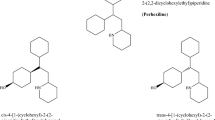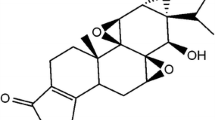Abstract
P-glycoprotein (P-gp) is an ABC transporter exhibiting high pharmacotoxicological relevance by extruding a wide range of cytotoxic compounds out of the cells. Previously, we demonstrated that the phytoestrogen genistein (GNT) modulates P-gp expression in hepatocellular carcinoma in vitro. Although several beneficial effects (e.g., antioxidant, antimutagenic, anticancer) have been attributed to GNT, the molecular mechanisms have not been totally elucidated. In the present work, we evaluated the effect of GNT on P-gp expression in rat liver, kidney and ileum. We found that GNT (5 mg/kg daily s.c. 3 days) increased hepatic P-gp expression and also Mdr1a (one of the genes encoding P-gp) mRNA levels. Renal and intestinal P-gp remained unchanged after GNT treatment. Hepatic P-gp activity measured with rhodamine-123 and digoxin, both well-known P-gp substrates, was also increased. In vitro experiments using hepatocyte primary cell culture demonstrated that inhibition of ER-α with ICI182/780 did not prevent Mdr1a mRNA up-regulation by GNT (10 µM). In contrast, Mdr1a induction was suppressed after pregnane X receptor (PXR) inhibition by sulforaphane and knockdown of this nuclear receptor. These findings were confirmed in vivo by using the PXR antagonist ketoconazole. In conclusion, we demonstrated the induction of hepatic P-gp expression and activity by GNT in vivo, with PXR being a likely mediator. This suggests that GNT, at concentrations observed in plasma of individuals consuming the phytoestrogen in the diet or through supplements, could affect the clearance of relevant P-gp substrates of therapeutic use as well as toxicity of environmental and food toxicants.





Similar content being viewed by others
References
Alvaro D, Alpini G, Onori P et al (2000) Estrogens stimulate proliferation of intrahepatic biliary epithelium in rats. Gastroenterology 119:1681–1691. https://doi.org/10.1053/gast.2000.20184
Barrand MA, Twentyman PR (1992) Differential recognition of mdrla and mdrlb gene products in multidrug resistant mouse tumour cell lines by different monoclonal antibodies. Br J Cancer 65:239–245. https://doi.org/10.1038/bjc.1992.48
Brady JM, Cherrington NJ, Hartley DP et al (2002) Tissue distribution and chemical induction of multiple drug resistance genes in rats. Drug Metab Dispos 30:838–844. https://doi.org/10.1124/dmd.30.7.838
Burk O, Arnold KA, Geick A et al (2005) A role for constitutive androstane receptor in the regulation of human intestinal MDR1 expression. Biol Chem 386:503–513. https://doi.org/10.1515/BC.2005.060
Cao Y, Calafat AM, Doerge DR et al (2009) Isoflavones in urine, saliva, and blood of infants: data from a pilot study on the estrogenic activity of soy formula. J Expo Sci Environ Epidemiol 19:223–234. https://doi.org/10.1038/jes.2008.44
Catania VA, Sánchez Pozzi EJ, Luquita MG et al (2004) Co-regulation of expression of phase II metabolizing enzymes and multidrug resistance-associated protein 2. Ann Hepatol Off J Mex Assoc Hepatol 3:11–17. https://doi.org/10.1016/s1665-2681(19)32119-2
Cerveny L, Svecova L, Anzenbacherova E et al (2007) Valproic acid induces CYP3A4 and MDR1 gene expression by activation of constitutive androstane receptor and pregnane X receptor pathways. Drug Metab Dispos 35:1032–1041. https://doi.org/10.1124/dmd.106.014456
Cui YJ, Cheng X, Weaver YM, Klaassen CD (2009) Tissue distribution, gender-divergent expression, ontogeny, and chemical induction of multidrug resistance transporter genes (Mdria, Mdrib, Mdr2) in mice. Drug Metab Dispos 37:203–210. https://doi.org/10.1124/dmd.108.023721
Cummins CL, Mangravite LM, Benet LZ (2001) Characterizing the expression of CYP3A4 and efflux transporters (P-gp, MRP1, and MRP2) in CYP3A4-transfected Caco-2 cells after induction with sodium butyrate and the phorbol ester 12-O-tetradecanoylphorbol-13-acetate. Pharm Res 18:1102–1109. https://doi.org/10.1023/A:1010914624111
De Martin S, Gabbia D, Albertin G et al (2014) Differential effect of liver cirrhosis on the pregnane X receptor-mediated induction of CYP3A1 and 3A2 in the rat. Drug Metab Dispos 42:1617–1626. https://doi.org/10.1124/dmd.114.058511
di Masi A, De ME, Ascenzi P, Marino M (2009) Nuclear receptors CAR and PXR: molecular, functional, and biomedical aspects. Mol Asp Med 30:297–343
Doherty MM, Charman WN (2002) The mucosa of the small intestine. Clin Pharmacokinet 41:235–253. https://doi.org/10.2165/00003088-200241040-00001
Ghanem CICI, Gómez PCPC, Arana MC et al (2004) Effect of acetaminophen on expression and activity of rat liver multidrug resistance-associated protein 2 and P-glycoprotein. Biochem Pharmacol 68:791–798. https://doi.org/10.1016/j.bcp.2004.05.014
Huang H, Wang H, Sinz M et al (2007) Inhibition of drug metabolism by blocking the activation of nuclear receptors by ketoconazole. Oncogene 26:258–268. https://doi.org/10.1038/sj.onc.1209788
Jäger W, Winter O, Halper B et al (1997) Modulation of liver canalicular transport processes by the tyrosine-kinase inhibitor genistein: implications of genistein metabolism in the rat. Hepatology 26:1467–1476. https://doi.org/10.1002/hep.510260613
Kageyama M, Fukushima K, Togawa T et al (2006) Relationship between excretion clearance of rhodamine 123 and P-glycoprotein (Pgp) expression induced by representative Pgp inducers. Biol Pharm Bull 29:779–784. https://doi.org/10.1248/bpb.29.779
Klaassen CD, Aleksunes LM (2010) Xenobiotic, bile acid, and cholesterol transporters. Pharmacol Rev 62:1–96. https://doi.org/10.1124/pr.109.002014.1
Kubitz R, Helmer A, Häussinger D (2005) Biliary transport systems: short-term regulation. Methods Enzymol 400:542–557. https://doi.org/10.1016/S0076-6879(05)00030-3
Li Y, Ross-Viola JS, Shay NF et al (2009) Human CYP3A4 and murine Cyp3A11 are regulated by equol and genistein via the pregnane X receptor in a species-specific manner. J Nutr 139:898–904. https://doi.org/10.3945/jn.108.103572
Li Y, Luh CJ, Burns KA et al (2013) Endocrine-disrupting chemicals (EDCs). In vitro mechanism of estrogenic activation and differential effects on ER target genes. Environ Health Perspect 121:459–466. https://doi.org/10.1289/ehp.1205951
Martin P, Riley R, Back DJ, Owen A (2008) Comparison of the induction profile for drug disposition proteins by typical nuclear receptor activators in human hepatic and intestinal cells. Br J Pharmacol 153:805–819. https://doi.org/10.1038/sj.bjp.0707601
Miszczuk GS, Barosso IR, Larocca MC et al (2018) Mechanisms of canalicular transporter endocytosis in the cholestatic rat liver. Biochim Biophys Acta Mol Basis Dis 1864:1072–1085. https://doi.org/10.1016/j.bbadis.2018.01.015
Mottino AD, Hoffman T, Jennes L et al (2001) Expression of multidrug resistance-associated protein 2 in small intestine from pregnant and postpartum rats. Am J Physiol Gastrointest Liver Physiol 280:G1261–G1273. https://doi.org/10.1152/ajpgi.2001.280.6.G1261
Perdomo VG, Rigalli JP, Villanueva SSM et al (2013) Modulation of biotransformation systems and ABC transporters by benznidazole in rats. Antimicrob Agents Chemother 57:4894–4902. https://doi.org/10.1128/AAC.02531-12
Qiao E-Q, Yang H-J (2014) Effect of pregnane X receptor expression on drug resistance in breast cancer. Oncol Lett 7:1191–1196. https://doi.org/10.3892/ol.2014.1817
Rigalli JP, Ruiz ML, Perdomo VG et al (2011) Pregnane X receptor mediates the induction of P-glycoprotein by spironolactone in HepG2 cells. Toxicology 285:18–24. https://doi.org/10.1016/j.tox.2011.03.015
Rigalli JP, Ciriaci N, Arias A et al (2015) Regulation of multidrug resistance proteins by genistein in a hepatocarcinoma cell line: impact on sorafenib cytotoxicity. PLoS One 10:e0119502. https://doi.org/10.1371/journal.pone.0119502
Rigalli JP, Ciriaci N, Mottino AD et al (2016a) Modulation of expression and activity of ABC transporters by the phytoestrogen genistein. Impact on drug disposition. Curr Med Chem 23:1370–1389. https://doi.org/10.2174/0929867323666160406120711
Rigalli JP, Tocchetti GN, Arana MR et al (2016b) The phytoestrogen genistein enhances multidrug resistance in breast cancer cell lines by translational regulation of ABC transporters. Cancer Lett 376:165–172. https://doi.org/10.1016/j.canlet.2016.03.040
Ruiz ML, Villanueva S, Luquita MG et al (2005) Mechanisms involved in spironolactone-induced choleresis in the rat: role of multidrug resistance-associated protein 2. Biochem Pharmacol 69:531–539. https://doi.org/10.1016/j.bcp.2004.10.017
Ruiz ML, Villanueva SSM, Luquita MG et al (2007) Beneficial effect of spironolactone administration on ethynylestradiol-induced cholestasis in the rat: involvement of up-regulation of multidrug resistance-associated protein 2. Drug Metab Dispos 35:2060–2066. https://doi.org/10.1124/dmd.107.016519
Ruiz ML, Rigalli JP, Arias A et al (2013) Induction of hepatic multidrug resistance-associated protein 3 by ethynylestradiol is independent of cholestasis and mediated by estrogen receptor. Drug Metab Dispos 41:275–280. https://doi.org/10.1124/dmd.112.047357
Salleh N, Helmy MM, Fadila KN, Yeong SO (2013) Isoflavone genistein induces fluid secretion and morphological changes in the uteri of post-pubertal rats. Int J Med Sci 10:665–675. https://doi.org/10.7150/ijms.5207
Seglen POO (1973) Preparation of rat liver cells. II. Effects of ions and chelators on tissue dispersion. Exp Cell Res 76:25–30. https://doi.org/10.1016/0014-4827(73)90414-X
Shi J-FF, Yang N, Ding H-JJ et al (2014) ERα directly activated the MDR1 transcription to increase paclitaxel-resistance of ERα-positive breast cancer cells in vitro and in vivo. Int J Biochem Cell Biol 53:35–45. https://doi.org/10.1016/j.biocel.2014.04.016
Sureda A, Sanches Silva A, Sánchez-Machado DI et al (2017) Hypotensive effects of genistein: from chemistry to medicine. Chem Biol Interact 268:37–46. https://doi.org/10.1016/j.cbi.2017.02.012
Takeshita A, Taguchi M, Koibuchi N, Ozawa Y (2002) Putative role of the orphan nuclear receptor SXR (steroid and xenobiotic receptor) in the mechanism of CYP3A4 inhibition by xenobiotics. J Biol Chem 277:32453–32458. https://doi.org/10.1074/jbc.M111245200
Torres AM, MacLaughlin M, Quaglia NB, Stremmel W (2003) Role of BSP/bilirubin binding protein on p-aminohippurate transport in rat kidney. Mol Cell Biochem 245:149–156. https://doi.org/10.1023/A:1022833713727
Tu C-C, Kumar VB, Day CH et al (2013) Estrogen receptor α (ESR1) over-expression mediated apoptosis in Hep3B cells by binding with SP1 proteins. J Mol Endocrinol 51:203–212. https://doi.org/10.1530/JME-13-0085
Uhlen M, Fagerberg L, Hallstrom BM et al (2015) Tissue-based map of the human proteome. Science (80-) 347:1260419–1260419. https://doi.org/10.1126/science.1260419
Villanueva SSM, Arias A, Ruiz ML et al (2010) Induction of intestinal multidrug resistance-associated protein 2 by glucagon-like peptide 2 in the rat. J Pharmacol Exp Ther 335:332–341. https://doi.org/10.1124/jpet.110.171041
Vos TA, Hooiveld GJEJ, Koning H et al (1998) Up-regulation of the multidrug resistance genes, Mrp1 and Mdr1b, and down-regulation of the organic anion transporter, Mrp2, and the bile salt transporter, Spgp, in endotoxemic rat liver. Hepatology 28:1637–1644. https://doi.org/10.1002/hep.510280625
Xiao C-QQ, Chen R, Lin J et al (2012) Effect of genistein on the activities of cytochrome P450 3A and P-glycoprotein in Chinese healthy participants. Xenobiotica 42:173–178. https://doi.org/10.3109/00498254.2011.615954
Yue W, Lee JK, Abe K et al (2011) Decreased hepatic breast cancer resistance protein expression and function in multidrug resistance-associated protein 2-deficient (TR-) rats. Drug Metab Dispos 39:441–447. https://doi.org/10.1124/dmd.110.035188
Zhang H, LeCulyse E, Liu L et al (1999) Rat pregnane X receptor: molecular cloning, tissue distribution, and xenobiotic regulation. Arch Biochem Biophys 368:14–22. https://doi.org/10.1006/abbi.1999.1307
Zhou C, Poulton E-JJ, Grün F et al (2007) The dietary isothiocyanate sulforaphane is an antagonist of the human steroid and xenobiotic nuclear receptor. Mol Pharmacol 71:220–229. https://doi.org/10.1124/mol.106.029264
Acknowledgements
This work was supported by the National Agency of Scientific and Technical Promotion (ANPCyT) [PICT 2016–1664] and by Rosario National University [BIO 540]. Dr. J. P. Rigalli is supported by the Radboud Excellence Initiative Fellowship (Radboud University). We would like to thank Diego Taborda for his excellent technical assistance.
Author information
Authors and Affiliations
Corresponding author
Ethics declarations
Conflict of interest
The authors confirm that this article content has no conflict of interest.
Additional information
Publisher's Note
Springer Nature remains neutral with regard to jurisdictional claims in published maps and institutional affiliations.
Electronic supplementary material
Below is the link to the electronic supplementary material.
Rights and permissions
About this article
Cite this article
Semeniuk, M., Ceré, L.I., Ciriaci, N. et al. Regulation of hepatic P-gp expression and activity by genistein in rats. Arch Toxicol 94, 1625–1635 (2020). https://doi.org/10.1007/s00204-020-02708-3
Received:
Accepted:
Published:
Issue Date:
DOI: https://doi.org/10.1007/s00204-020-02708-3




